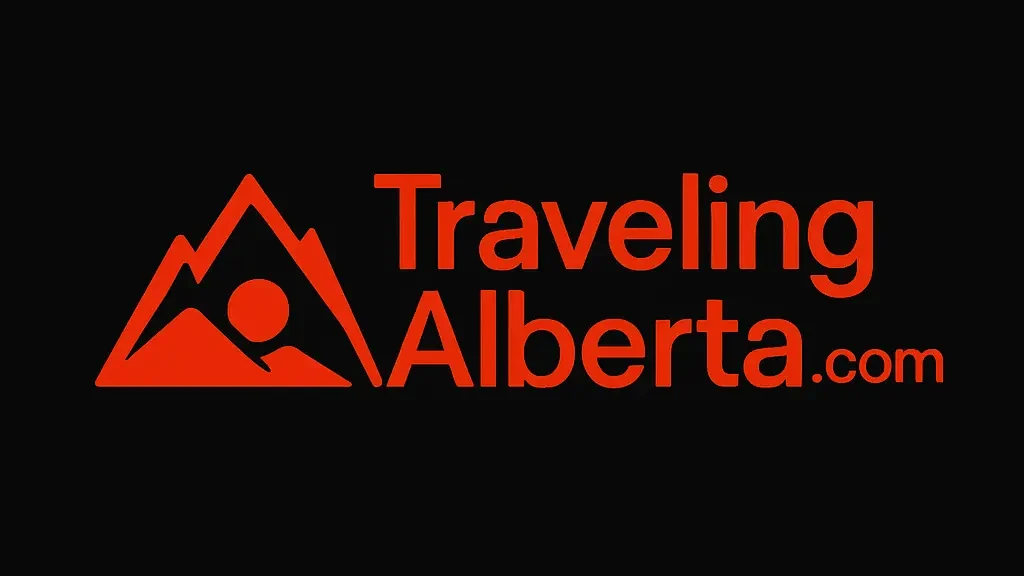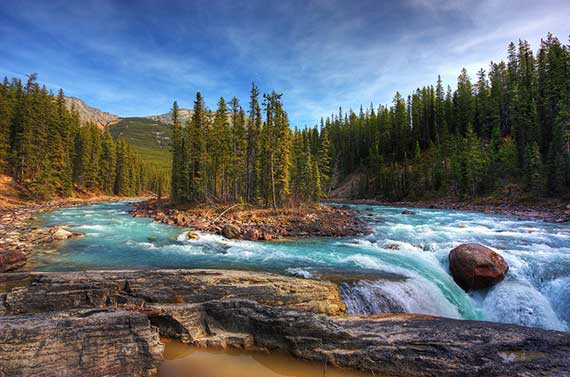Hidden within the wild beauty of Jasper National Park, Sunwapta Falls is a thundering waterfall that deserves a top spot on any Alberta itinerary. Surrounded by alpine forest, glacier-fed rivers, and towering peaks, the falls offer a perfect mix of dramatic scenery and peaceful nature. Whether you’re on a Canadian Rockies road trip or staying in Jasper, Sunwapta Falls is one of the best places to connect with raw, powerful nature without needing to hike far.
Named after a Stoney Nakoda word meaning “turbulent river”, the falls live up to their name. The sheer force of water tumbling into a deep canyon is something you hear and feel before you see it. What makes Sunwapta Falls even more special is that it’s easily accessible right off the Icefields Parkway — Canada’s most scenic highway — and offers both upper and lower falls for those who want to explore a little further.
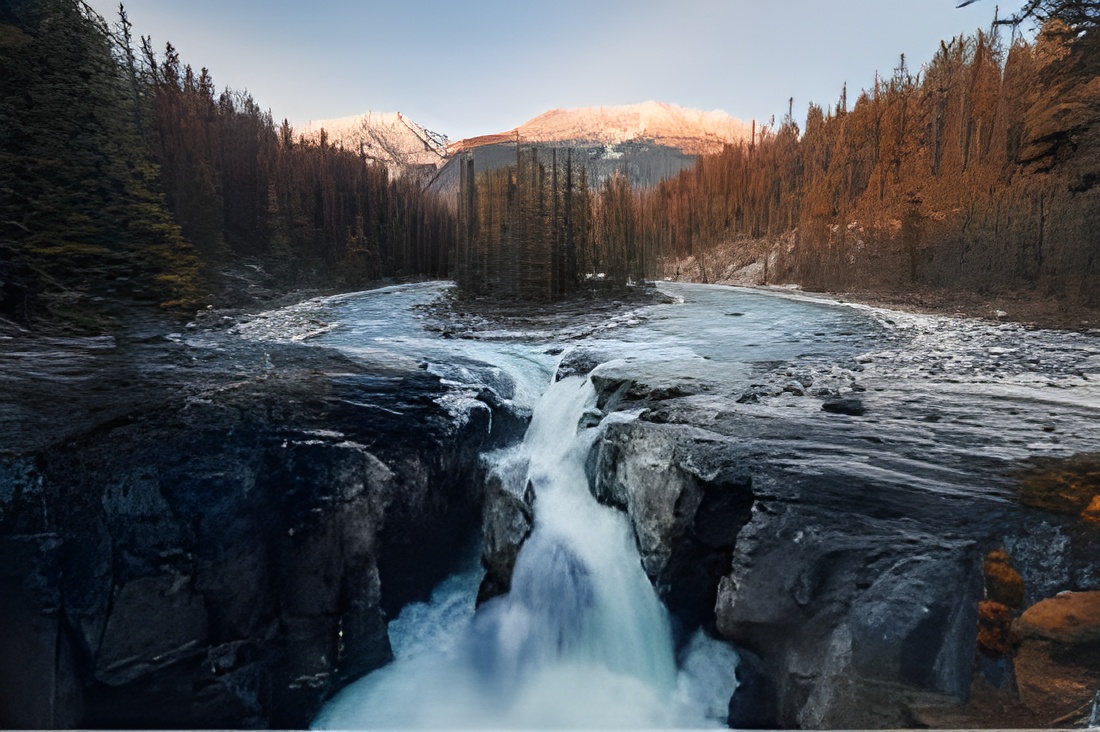
What Makes Sunwapta Falls So Special?
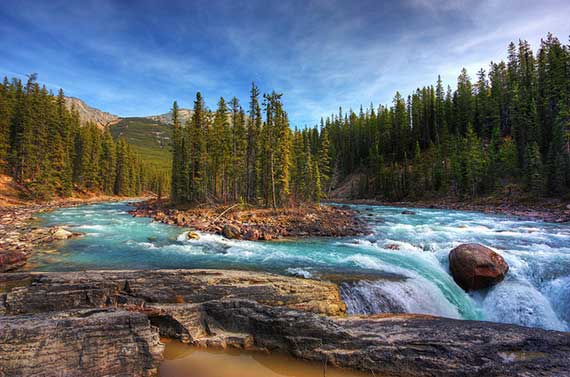
What sets Sunwapta Falls apart from other waterfalls in the Canadian Rockies is its power, setting, and accessibility. Fed by the Athabasca Glacier, the falls change drastically with the seasons. In spring and early summer, the snowmelt and glacial runoff give the river an incredible volume and speed. You’ll see frothing, milky-blue water crash over the cliffs, creating mist and sound that fill the surrounding valley. The force is awe-inspiring.
Unlike waterfalls deep in the backcountry, Sunwapta is just a short walk from the highway. Within minutes, you’ll find yourself at the Upper Falls viewpoint, where water splits dramatically around a small island and then plunges into a narrow limestone canyon. The landscape is wild and raw, yet the trail is easy and safe for all ages.
How to Get to Sunwapta Falls (And What You’ll See)
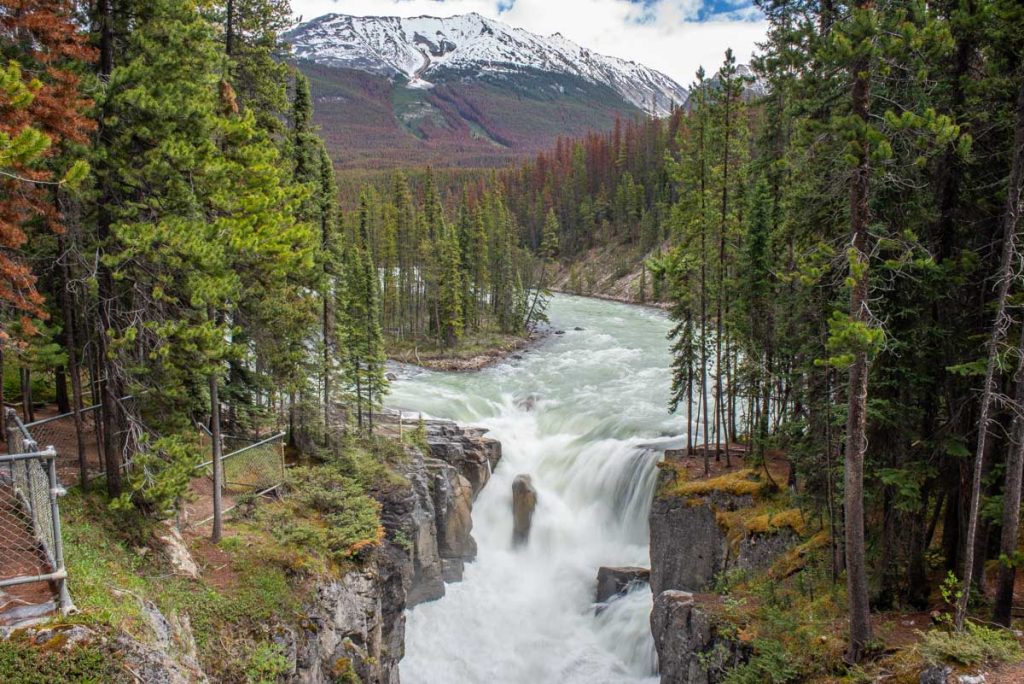
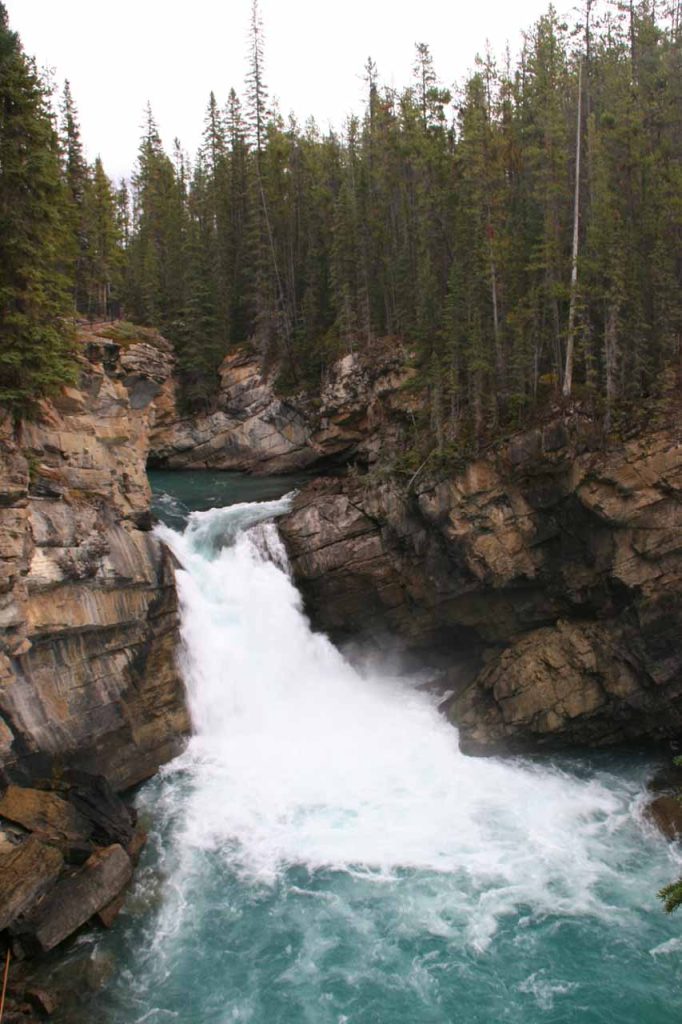
Sunwapta Falls is located about 55 km south of Jasper on the famous Icefields Parkway (Highway 93). This highway connects Jasper to Lake Louise and Banff and is considered one of the most scenic drives in the world. Just look for the Sunwapta Falls sign on the west side of the road—it’s hard to miss.
Here’s what to expect on your visit:
- Parking: There’s a designated lot just a few minutes’ walk from the falls. It’s free and spacious enough for cars, RVs, and tour buses.
- Trail to Upper Falls: A short, paved trail leads to the main viewpoint. The footbridge across the gorge gives a front-row view of the thundering drop.
- Photo Opportunities: Take pictures from the bridge, near the railings, and along the trail that follows the river for other angles.
- Lower Falls Hike: If you have time, take the 1.3 km trail down to the Lower Falls. It’s mostly downhill on the way there, with a mild climb back.
Along the way, you might spot wildlife like squirrels, chipmunks, or even elk in the forest. Keep your eyes open, and your camera ready!
Best Time to Visit Sunwapta Falls
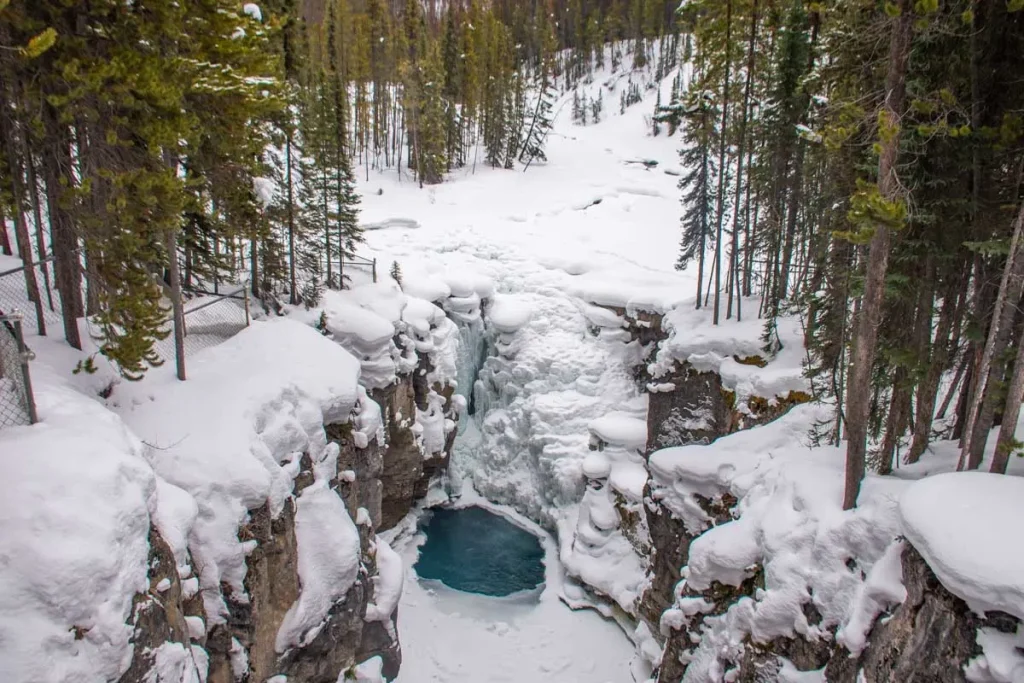
Sunwapta Falls is most dramatic during late spring and early summer, when glacial melt swells the Sunwapta River. From May through July, the falls roar at their fullest, making this the best time to experience their power. This is also when the turquoise color of the water, caused by glacial silt, is at its brightest.
Seasonal Breakdown:
- Spring (May – June): Peak water flow from glacial melt. Ideal for dramatic photos and strong water movement.
- Summer (July – August): Still powerful but with slightly less flow. Perfect for family trips and warm-weather visits.
- Autumn (September – early October): Fall colors light up the forest, and the falls become a peaceful place for a quieter visit.
- Winter: Although the access road may be open, the falls may be partially frozen. It becomes a serene and magical (but slippery) winter wonderland. Use caution, as the trails are not maintained.
No matter when you visit, be sure to check the weather and road conditions before heading out, especially if you’re driving along the Icefields Parkway in shoulder seasons.
Hiking at Sunwapta Falls: Easy Adventure for Everyone
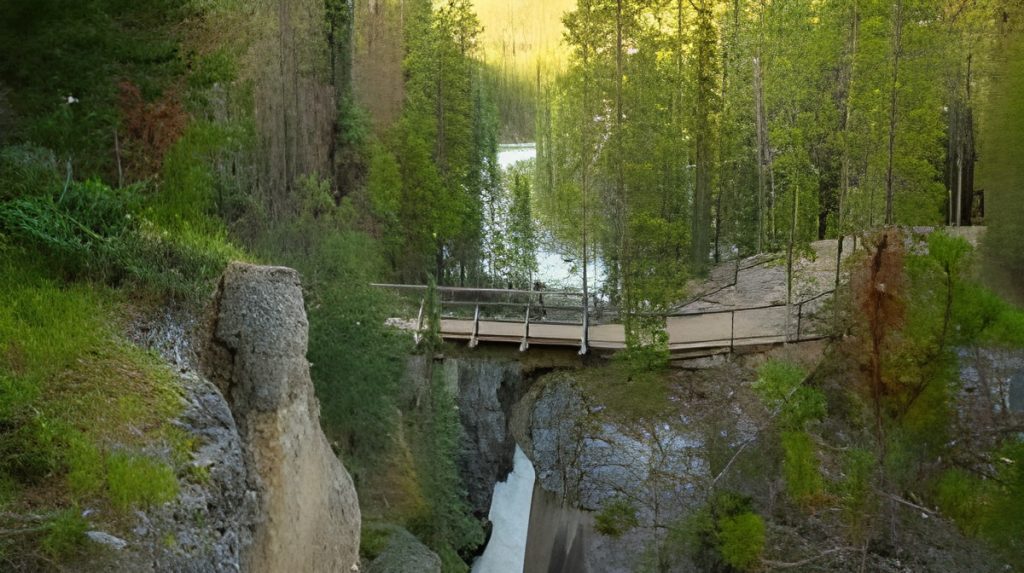
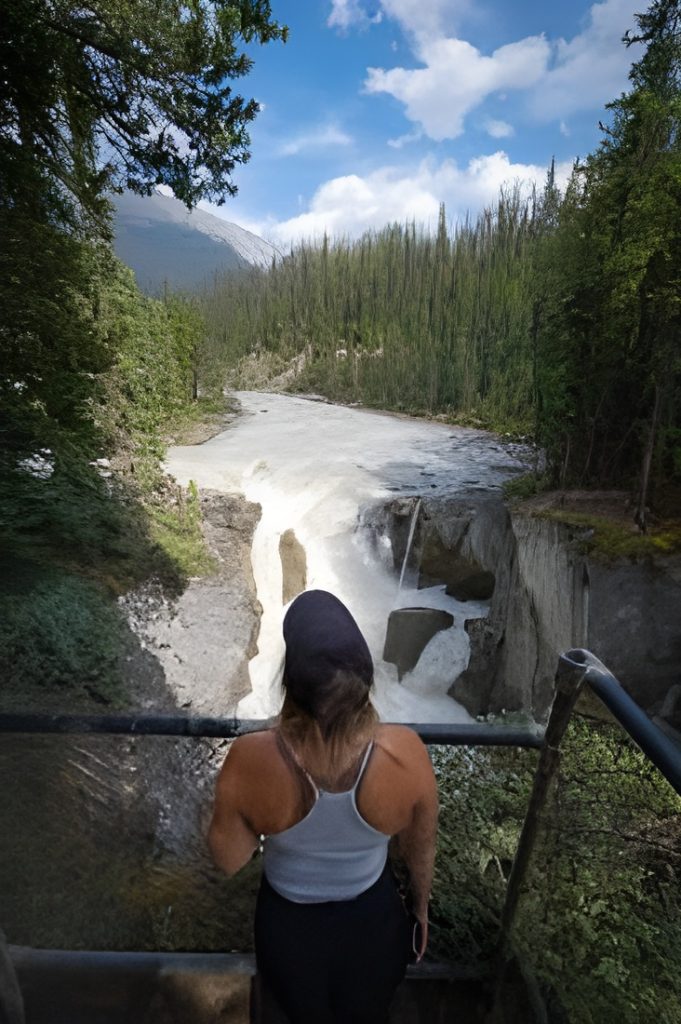
Sunwapta Falls is great for all fitness levels. The main viewpoint is a quick, flat walk, making it wheelchair- and stroller-accessible (to the bridge). But for those looking to enjoy a quiet nature walk, the Lower Falls trail is a must-do.
This trail winds through quiet forests, opening occasionally to river views. Along the way, you’ll enjoy birdsong, the scent of pine trees, and the sound of flowing water. Once you reach the lower falls, you’ll find fewer crowds, great angles for photos, and a calming space to sit and enjoy the surroundings.
Hiking Tips:
- Wear closed shoes or hiking boots, especially in spring or after rain.
- Bring water and bug spray in summer.
- Carry bear spray if walking alone or in low-traffic hours (just in case).
- Stay on marked trails to protect fragile terrain and your safety.
Where to Stay Near Sunwapta Falls
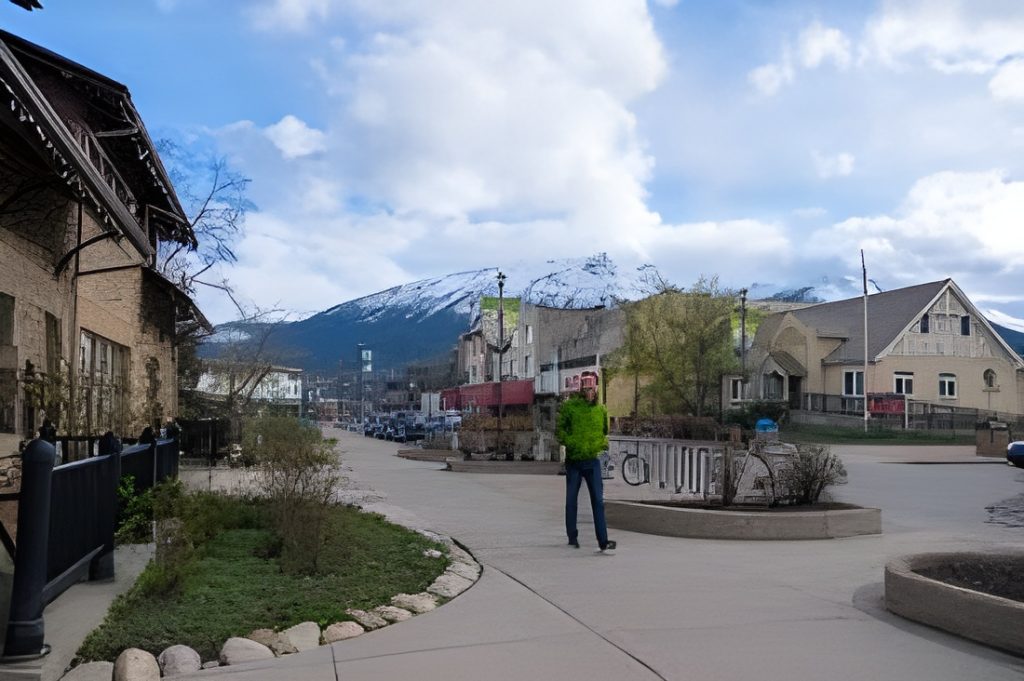
One of the great things about Sunwapta Falls is that you don’t need to rush your visit. There’s a charming place to stay right next door: the Sunwapta Falls Rocky Mountain Lodge. This rustic but comfortable lodge offers private log cabins and lodge rooms, making it an excellent base for exploring Jasper’s southern reaches.
The lodge also has an on-site restaurant, which is perfect for grabbing breakfast or dinner after a day of exploring. Its remote location means you’ll get stargazing opportunities with minimal light pollution and a real feel of wilderness.
Other Accommodation Options:
- Jasper Town (55 km north) – Hotels, motels, hostels, and campgrounds. Also offers restaurants, grocery stores, and visitor services.
- Columbia Icefield Area (60 km south) – If you’re heading toward the Athabasca Glacier, you can stay at the Glacier View Lodge or nearby campsites.
No matter where you stay, Sunwapta Falls makes a great stop or overnight point along the Icefields Parkway.
Sunwapta Falls vs. Athabasca Falls: What’s the Difference?
Many travelers wonder how Sunwapta Falls compares to its more famous neighbor, Athabasca Falls, just 23 km north. The truth is, both are amazing—but they offer distinct experiences.
| Feature | Sunwapta Falls | Athabasca Falls |
|---|
| Height | ~18 meters | ~23 meters |
| Water Source | Athabasca Glacier (via Sunwapta River) | Athabasca River |
| Trail Length | Short trail + optional hike | Multiple short paths |
| Accessibility | Less crowded | Very popular, can be busy |
| Unique Feature | Water splits around an island | Deep canyon with carved rock |
ture Water splits around an island Deep canyon with carved rock
If you have time, visit both. But if you want a more peaceful and intimate waterfall experience, Sunwapta often feels more personal and is less crowded.
Tips for Visiting Sunwapta Falls
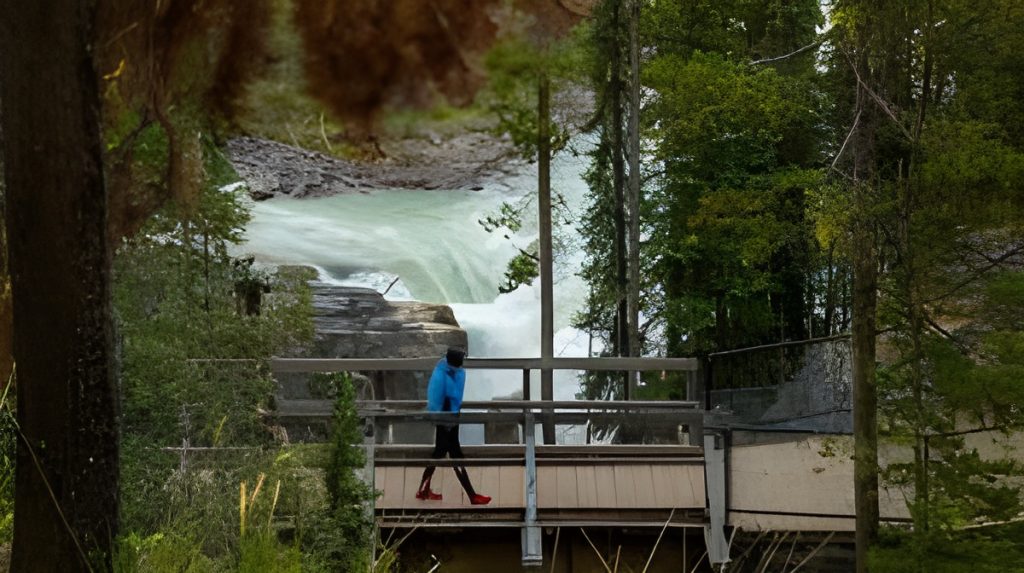
To make the most of your trip, keep these helpful tips in mind:
- Start Early: Morning visits mean fewer crowds, better lighting, and a calmer atmosphere.
- Be Weather-Ready: Mountain weather changes quickly—bring layers and rain protection.
- Respect Nature: Stay behind railings, and don’t climb near the edge of the falls or on wet rocks.
- Pack Snacks & Water: There are limited food stops between Jasper and the Icefields.
- Combine with Nearby Sights: Pair your visit with stops at Athabasca Falls, Tangle Creek Falls, or the Columbia Icefield Skywalk for a full-day adventure.
Final Thoughts: Why Sunwapta Falls Is Worth the Stop
Sunwapta Falls is a must-see destination in Jasper National Park. Its accessibility, powerful water flow, and surrounding beauty make it perfect for both quick stops and longer visits. Whether you’re watching water crash into a canyon from a bridge or hiking to peaceful hidden falls through a pine forest, Sunwapta offers an unforgettable Rocky Mountain experience.
If you’re driving the Icefields Parkway, this is one stop you absolutely shouldn’t skip. It’s a reminder of how wild and beautiful Canada’s nature can be—no long hikes or expensive tours required.
